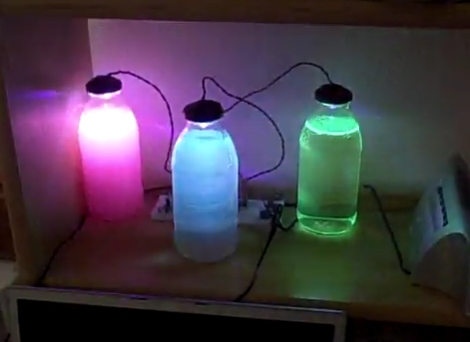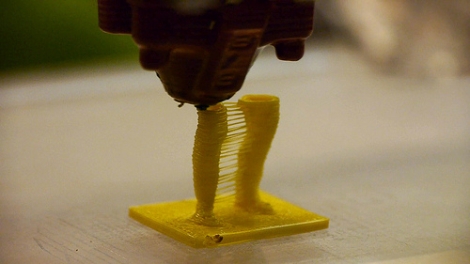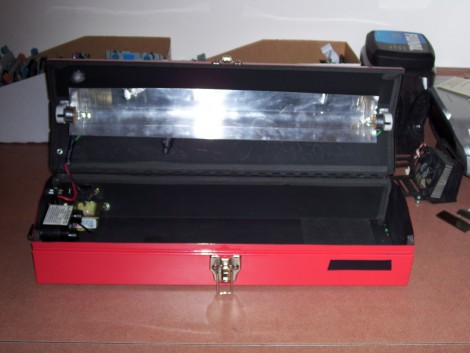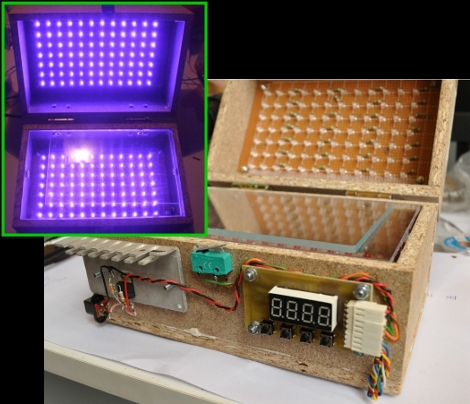
Making your own boards at home is among the heights of achievement for home tinkerers, and one fraught with frustration. The toner transfer process requires carefully peeling away layers of photo paper, and milling your own circuit boards is an exercise in complexity. One of the best options is using photosensitive copper boards, but this requires exposing the masked-off copper to fairly intense UV light. A UV exposure box is a wonderful project, then, and something [Carlo] just about has wrapped up.
The first portion of [Carlo]’s build involved placing 135 UV LEDs on a piece of protoboard. This UV source eats up a surprising amount of power; [Carlo] is using 12V for the supply, so an old industrial power supply is more than capable of dishing out the 1.5 Amps required for the build.
Next, [Carlo] needed a timer for his exposure box. He settled on a design based on an ATMega8 turning a high voltage transistor on and off with a character LCD for the user interface. A few buttons allow [Carlo] to set the countdown timer, after which the LEDs turn on for a set period of time.
All this was packaged into a small box [Carlo] picked up from Ikea. It’s a very useful build, and judging from the video after the break, extremely easy to use.

















